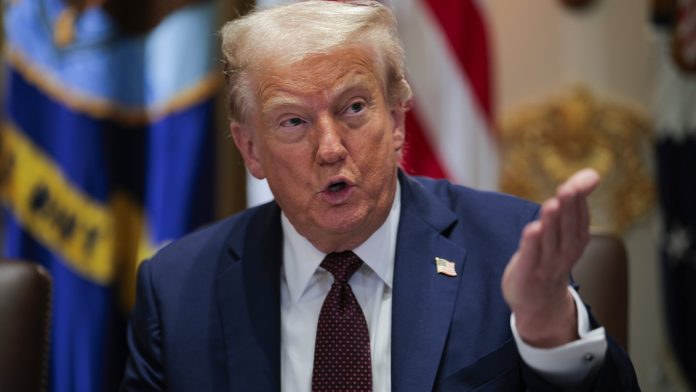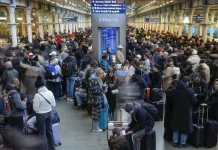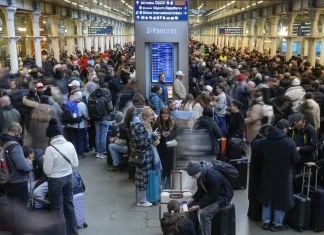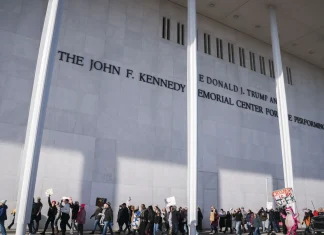
Death Penalty Returns to the Heart of America: A New Chapter in Washington D.C.’s Criminal Justice Story
In the pulsating core of the United States, where history meets power on every street corner, a new and striking chapter is being written—one that resurrects a legal thunderbolt long dormant: the death penalty. President Donald Trump has boldly declared that the federal government will start seeking the death penalty in homicide cases in Washington D.C., a decision that reverberates far beyond the city’s marble facades and manicured lawns. It’s a move loaded with political symbolism, legal upheaval, and profound questions about justice, governance, and the soul of the nation.
The Capital’s Unique Legal Landscape
Washington D.C. is no ordinary city. It inhabits a constitutional limbo as a federal district, neither a state nor quite a municipality. The Constitution’s architects carved it as neutral ground, a seat of federal power that’s directly beholden to Congress rather than local governance. Yet since the Home Rule Act of 1973, residents have been able to elect mayors and councils—symbolic markers of autonomy within this federal enclave.
Still, D.C. sits at the crossroads of politics and law, where federal authorities often intersect with local officials in managing crime and public policy. The death penalty has long been banned within the city for crimes prosecuted under local law, reflecting a broader progressive ethos embraced by the majority Democratic population. But under federal law, capital punishment remains on the statute books, a ghost in the system ready to be called forth.
Trump’s Law-and-Order Gambit
At a recent White House cabinet meeting, President Trump stated bluntly, “If somebody kills somebody in the capital, Washington D.C., we’re going to be seeking the death penalty, and that’s a very strong preventative.” His tone was resolute, almost like a pledge to the millions of Americans watching amid heated debates over crime, governance, and justice.
He added, “I don’t know if we’re ready for it in this country, but we have it. It is—we have no choice.” With those words, Trump seemed to acknowledge the storm he was about to unleash: a stark revival of a policy largely shelved in a city that has firmly chosen a path away from capital punishment.
The announcement fits into Trump’s broader “law-and-order” narrative, a cornerstone of his political identity and appeal among certain voter bases. Deploying hundreds of National Guard troops and federal agents to Washington was his first line of offense, charging that violent crime runs rampant in the capital’s streets—claims vehemently denied by local officials armed with crime statistics showing a decline after a 2023 spike.
The Clash of Narratives: Crime and Reality
Here lies a tension that echoes throughout America: what do statistics say, and what do the lived experiences of citizens reveal? The Metropolitan Police Department has reported that after a troubling rise in homicides and violent incidents in early 2023, crime has tapered off. This data stands in sharp contrast with the administration’s justification for federal intervention.
“The numbers don’t always capture the fear people feel when crime flares up, even briefly,” says Dr. Lila Grant, a criminologist at Georgetown University. “But it’s also crucial to see these decisions in a political light—they aren’t purely about facts but about messaging, governance, and control.”
Indeed, the move to impose the death penalty—a policy largely rejected by the city’s residents—lines up with Trump’s interest in reasserting federal dominance over the District. He has gone so far as to threaten wresting control from local officials to crack down on crime and social issues like homelessness, a position that has intensified debates about democracy, representation, and states’ rights at the nation’s capital.
Historical Context and the Future of Federal Capital Punishment
Capital punishment in Washington D.C. has always held a complicated place. Its abolition locally mirrored a broader movement across many U.S. cities and states, reflecting progressive values that prize rehabilitation or question the morality of state-sponsored executions.
Yet federal law persists—and the Trump administration is wielding that authority with dramatic intent. In February, Attorney General Pam Bondi lifted a Biden-era moratorium on federal executions, which opens the gate for an increase in death penalty cases prosecuted federally. Already, federal prosecutors are moving ahead with death penalty charges in cases like that of Luigi Mangione, accused of a deadly shooting last year.
This shift could vastly expand the federal death row population. Cases involving the death penalty notoriously drag through the judicial system for years, tangled in appeals and constitutional challenges, meaning this initiative will not just be a policy flash in the pan, but a fixture impacting the legal landscape for years to come.
Voices from the City
Residents of Washington are divided—some see this as a necessary step to deter violent crime, while others view it as an aggressive federal overreach. Maria Gonzalez, a social worker in Southeast D.C., shares, “People here want safety, yes, but we also want fairness. The death penalty is not justice; it’s vengeance. This could tear our community apart.”
Conversely, John Whitaker, a retired police officer, voices a harsher perspective: “Criminals need to know there’s a real price for murder. Maybe this will stop some of the violence. Our city’s been rough lately.”
What Does This Mean for America?
Beyond the capital’s borders, Trump’s rhetoric hints at broader ambitions—Chicago is already on the radar as a potential “next step” for this federal crackdown. This expansion raises vital questions about federalism, race, class, and the limits of punitive criminal justice measures.
America’s relationship with the death penalty is as old and fraught as the country itself. As of 2024, 27 states have the death penalty, though executions have dramatically declined nationwide, with only 18 carried out in 2023. The practice remains controversial, complicated by concerns about wrongful convictions, racism, and disproportionate impacts on marginalized communities.
So, what does it mean to resurrect the death penalty in Washington D.C., symbolic heart of American democracy? Can capital punishment truly serve as a deterrent, or is it simply another specter of a punitive past? And what happens when federal power clashes with local aspirations and evolving social consciousness?
As the city braces for the legal and social upheavals ahead, one thing is clear: the story of Washington D.C., crime, punishment, and politics is far from over. For readers across the globe, where debates about justice and governance resonate profoundly, this unfolding saga offers a vivid lens to reconsider the promises and perils of power in modern society.
And you, dear reader—what role should empathy, data, and justice play in shaping how we respond to crime? When crime meets politics on the stage of the capital, the answers might surprise us all.









